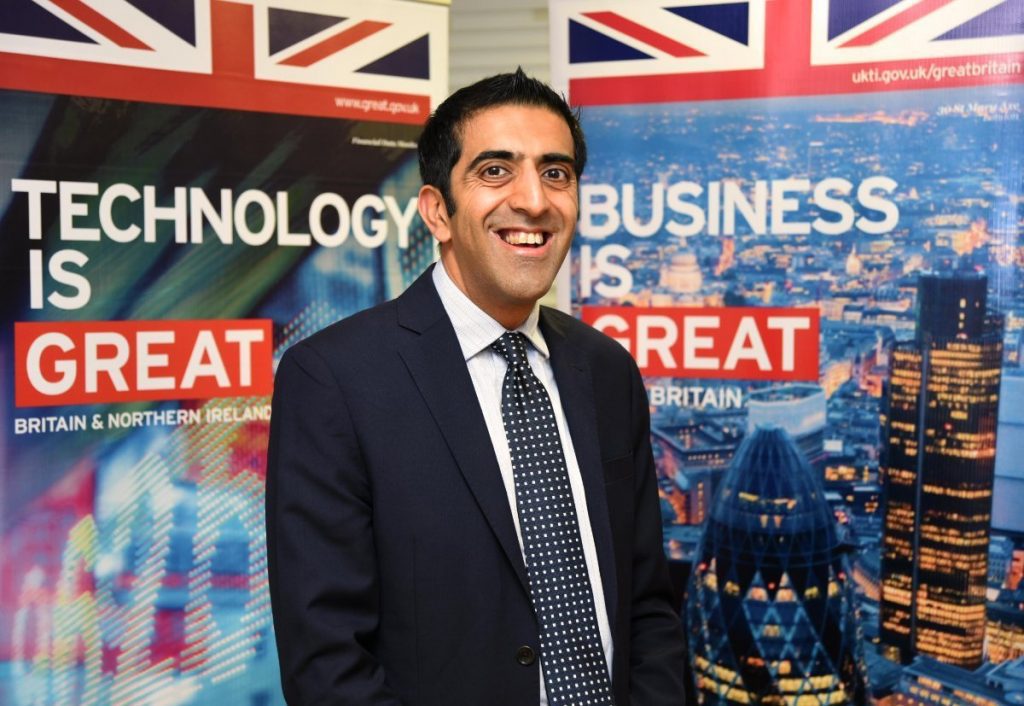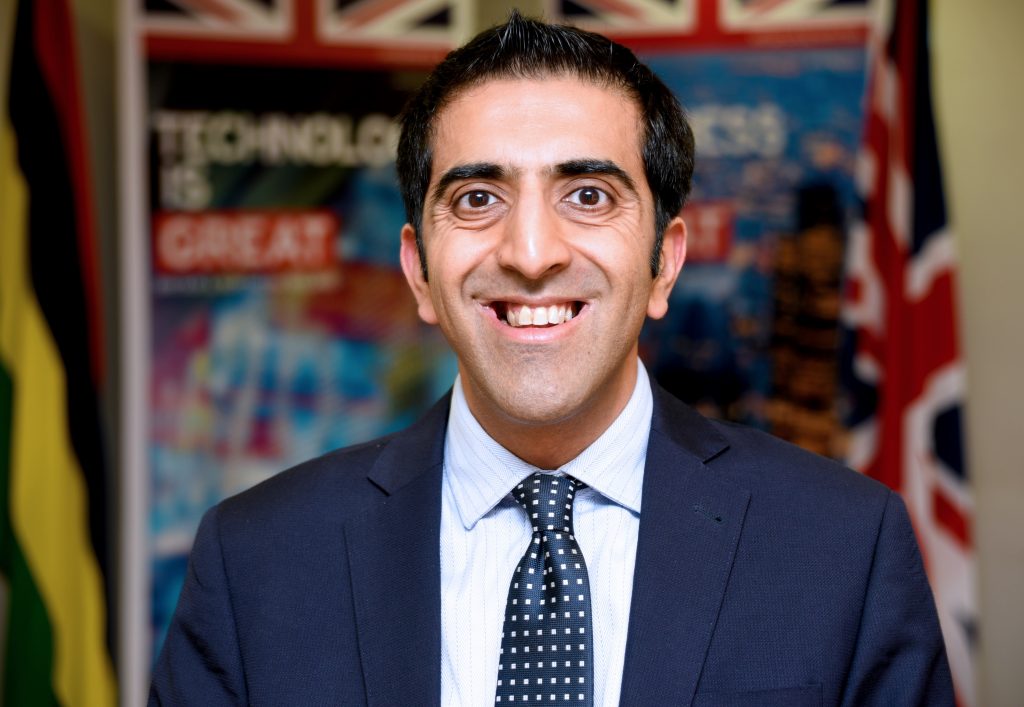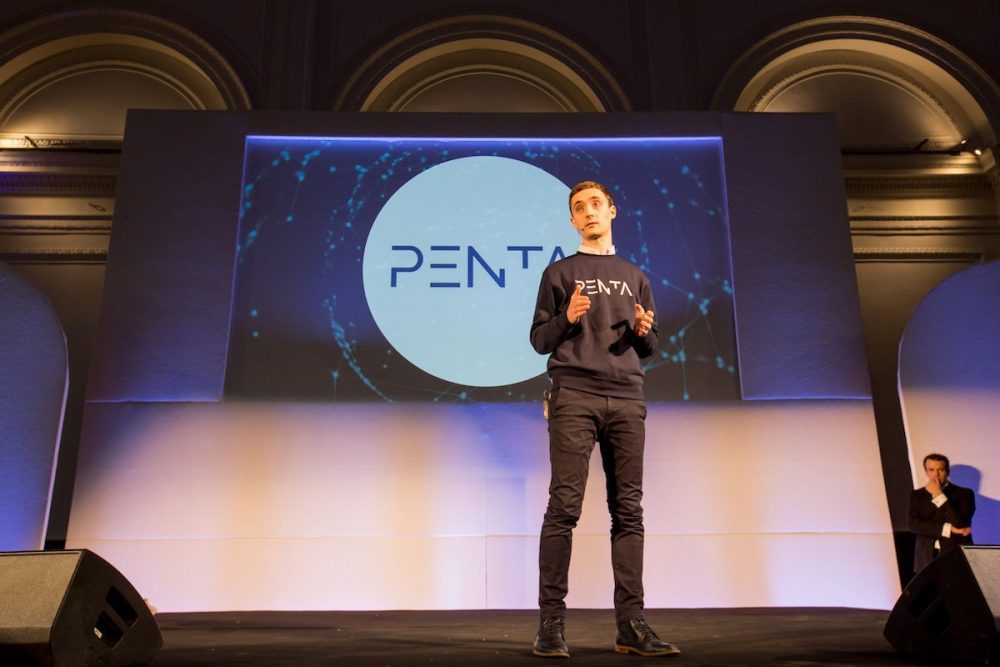
Hirander Misra is the Chairman and CEO of GMEX Group, a suite of solutions for the creation & operation of electronic exchanges and post trade infrastructure, while leading financial inclusion driven projects such as MINDEX and FinComEco. These projects have awarded him being recognized as a leading influencer in his field after being included in LATTICE80’s Top 100 influencer list for the UN Sustainable Developments Goal agenda for pioneering blockchain technology solutions.
Blockchain, crypto and the financial markets are Hirander’s three main areas of expertise. And that is the result of combining his two major passions – history and economics – into his professional career. As such, Hirander decided to study Economic History at the London School of Economics (LSE), graduating in 1995. Hirander quickly realised, while working at Reuters in 1996, that the employees on the business side did not understand technology and that the technology staff did not understand the business. From his side, Hirander understood that technology moving forward would increasingly enable new business opportunities and that those who knew both aspects would be at a distinct advantage.
Following that principle, Hirander Misra has become entrepreneur and has led successful enterprises in the trading sector, like GMEX Group, and innovative projects such as MINDEX and FinComEco. All of them following his vision: technology at the service of innovation and change, with a special focus on the social good capabilities that new tech and innovation can bring to the world.
In this two-part interview, we are going to navigate through Hirander Misra’s story, his vision of the world, specially highlighting those aspects regarding crypto and blockchain and how Hirander has applied that into his professional projects, including those trying to make a real impact in millions of people’s life.
This first part would focus on his personal career and the opportunities and challenges that new disruptive technologies such as crypto and blockchain are facing. And how they are impacting the world right now.
While in the second, we disclose how Hirander has applied his vision on blockchain and crypto into real projects to help those most in need in Africa. Likewise, we have asked the expert what the future looks like and if the world is ready for such disruptive technologies.
Here is the interview:
Question: You have multiple interests and positions as an entrepreneur and CEO of various successful companies, a blockchain advocate and crypto enthusiast. How do you see all these different parts of your personality and how do you cope with it?
Answer: The key if you are undertaking multiple ventures is to ensure they are all synergistic and to avoid deviating into something that is completely left field. That way expertise can be harnessed and time managed across multiple ventures simultaneously. As such, I always use the example that we are like a leading company that produces crisps (potato chips). They may be baked, fried, crinkle cut and in different flavours but they are still crisps and so whilst there seem to be many variations the focus remains. As such my personality is a focused, yet adaptable one, that looks to join the dots between various correlated opportunities.
Q: How do you apply this synergy in your work with startups and entrepreneurs? And as the entrepreneur?
A: Having been the founder/ co-founder of various companies from startup phase to growth I have been on the other side of the fence and understand the challenges that entrepreneurs face. Looking for capital on the right terms is the challenge for every startup. I experienced that the current venture capital model is sub optimum as the investment is rarely aligned well with the founders and post the financial crisis in 2008 the lending model from banks is very disjointed and not suitable for startups. Crowdfunding also has complications of dealing with the multitude of investors and conditions. Coupled with this, the misuse of ICOs has curtailed that model for wider funding and STOs have great potential but are still nascent.
As such, there is a dearth of suitable finance for startups that can be strategic but not constraining in terms of strategy. GMEX Group started to invest in such Fintech startups as did I in some cases personally with a more partnership driven approach that could be aligned with the entrepreneurs who in many cases had a good business plan and technology but lacked the ability to monetise it leveraging a network. This has been mutually beneficial and along with partners, GMEX Group, myself and partners are launching a fund focussed on digital Fintech, which allows us to scale this effectively and synergise different initiatives as well as partner with other funds and accelerators.
The current financial system has too many intermediaries and cost to income ratios which are too high where those consuming products and services are paying for those inefficiencies
Q: New entrepreneurs and companies have to deal with a world in deep change, specially convulse in the Financial industry. Can you tell us how do you see the financial world?
A: The current financial system has too many intermediaries and cost to income ratios which are too high where those consuming products and services are paying for those inefficiencies. There is also too much short-termism. The financial crisis led to the emergence of Bitcoin and that was no coincidence. This and new technologically focused new entrants – e.g. challenger digital banks – are also forcing the incumbents to react and innovate. Be it from within to the outside or through investment and acquisition from the outside in.
Robo Advisory is fast challenging traditional wealth management models and will only improve as Artificial Intelligence (AI) advances further. The right answer is not total decentralisation or maintaining the traditional status quo. Instead, it is somewhere in between where the best facets of both can be harnessed. As such the financial world is at an inflexion point and therein lies the huge opportunity for digital finance and as a subset of that change which will also lead to positive social impact such as banking the unbanked.

Q: Can you also tell us your vision on the trading context? Are blockchain/ crypto exchanges the future of trading?
A: Digital exchanges are the future. As I have outlined in my blog late last year, it is evident that exchange and financial market infrastructure model 1.0 will become extinct over the coming years as standalone exchanges will not be able to survive. Can we think of an era before the smartphone, which has democratised the way we can access and generate information? Today’s exchanges are essentially like the phones that existed before this era, not an iphone whose creator Apple is seen as an innovator which provides knowledge rather than a supplier of technology, thus commanding a premium for its products and services and being able to distribute and commercially benefit from third party services.
Model 2.0 is all about leveraging blockchain to create digital opportunity across jurisdictions without traditional intermediaries, who will need to reinvent themselves rather than just protect their turf in this new digital era by merely creating new ways of doing old things. It will allow exchanges to interconnect directly should they be willing to. This will facilitate asset swaps and general trading in tokenised form across a broad range of assets beyond just cryptocurrencies. This can include digital gold aligned to safe physical storage; security tokens with the ability to settle using stablecoins and digital fiat currencies using secure digital custodians aligned where applicable to physical assets and segregated cash on account held in escrow.
Crypto, Blockchain as disruptive forces
Q: You have mentioned that digital exchanges are the future and crypto and blockchain have a lot to say about it. Can you tell us about how did you start in the blockchain and crypto sphere?
A: GMEX Group started looking at Blockchain 3 years ago for the FinComEco agricultural commodities ecosystem project and the MINDEX gold exchange ecosystem project run from Mauritius on a Pan-African basis for provenance of supply chain and immutability of records. Two years ago we applied this to financial markets, more specifically with the launch of our GMEX Fusion digital technology suite. We realised that the traditional world and the digital world would need to combine and that technology and business process has to be hybrid and as such combine the best facets of both across multiple asset classes (both traditional and digital) from the perspective of trading, the exchange, clearing with integral risk management related to margin trading custody, secure wallet management.
More recently I am now on the board of a digital merchant bank setting up in the UK called DAG Global, an adviser to EQIBank a digital challenger bank with a wholesale global remit as well as numerous other initiatives across jurisdictions. These also include Arabian Bourse a new crypto asset exchange and digital custodian setting up under the regulation of ADGM (Abu Dhabi Global Market).
Q: How do you see blockchain technology for the financial sector? How disruptive is it?
A: After the emergence of electronic markets and online financial services, exchanges, banks and other financial intermediaries became for some time complacent towards innovation and the idea that there would be any real competition. Then regulation became more demanding, forcing financial services firms to react and creating opportunities for start-up trading firms with progressive ideas and ‘disruptive’ technology to bring new solutions. Interestingly, regulation could also be viewed as ‘disruptive’ as it was the driving force which pushed the financial sector players to adopt new innovations and adapt in conjunction with the market.
But what happens next in terms of evolution? We have seen the fast emergence of blockchain being applied to the financial sector space and once you cut through all the hype there are some interesting use cases now being productionised. Having said that it seems like every other day there is a new announcement about yet another initiative wanting to become the next game-changing institutional crypto exchange or global digital challenger bank with some wanting to become a combination of the two. Some will certainly succeed and that will be predicated on good technology, a sound business model and ultimately a good balance of liquidity.
This is already playing out as Revolut has become a unicorn in the UK with a USD$1.7 billion valuation as of January 2019. N26, the German mobile bank had a USD$2.7 billion valuation as of January 2019.
As such blockchain is very disruptive and we are only at the beginning of harnessing its true potential across financial markets.
Q: Indeed, disruption and innovation is starting to pay off in the FinTech scene, and blockchain will have a say in all of that. What are the main challenges and opportunities with blockchain for the global economy?
A: It was recently estimated that the finance industry blockchain market may reach USD$ 462 billion by 2030, according to business information provider IHS Markit. The figure represents substantial growth when compared to the value of blockchain in the financial sector in 2017, at USD$1.9 billion. In March 2019, Cisco predicted a USD$10 billion annual blockchain market by 2021 in terms of project spend.
Blockchain is increasingly seen as a path towards delivering a new industrial revolution – dubbed the 4th Industrial Revolution by providing a means of trusted communication and exchange that can be publicly verified.
The logic behind blockchain is one that is likely to be “as revolutionary as the Internet” if not more and, much work and investment is on-going to develop transformational “use cases” for deployment – not only in the most developed areas of financial services – but also in any sector where information is stored and transferred, including healthcare and real estate among other sectors.
Many jurisdictions have an incredible opportunity to support an innovation economy centred on their relative strengths, namely as international financial centres and, increasingly, as a technology hubs with significant international investment. This can lead to substantial job creation and GDP growth. The key is how cross border we deal effective bridges between different jurisdictions taking into account different laws and regulations so that multi node connectivity becomes a reality.
After the emergence of electronic markets and online financial services, exchanges, banks and other financial intermediaries became for some time complacent towards innovation and the idea that there would be any real competition
Q: Regulators can’t quite agree on how to effectively regulate blockchain-based financial services and products. Despite that, what are the main drivers and challenges for crypto and blockchain from a financial perspective?
A: Central Banks are reticent to lose control of monetary policy and so are mostly anti crypto yet many see the benefits of blockchain in areas such as efficient settlement. There needs to be an adoption of more harmonised global standards and best practice, which is starting to occur through some of the work the likes of the OECD are undertaking. Increasing trust will lead to adoption and the precursor to this is the introduction of services that appeal to institutions be it for digital custody, administration and valuations.
There are already large established banks working on solutions to custody crypto and not just tokenised versions of traditional assets and we will see some interesting announcements over the next 12 months. One such example is that in June 2019, the Bank of England announced that it will allow financial technology companies to deposit funds overnight opening up the payments market.
Q: Are digital coins the money and assets to trade with of the future?
A: Digital currencies of various forms will be the main means of transacting in the future as society moves to be increasingly cashless. This is so much more efficient for institutions too to eradicate the paper trail and facilitate instantaneous settlement at much lower cost. Much like Fiat currencies today, there will be various forms of digital currency with cryptocurrencies on the one hand and asset backed currencies on the other.
Facebook announced LIBRA, a digital currency backed by a mix of global assets. In February, JPMorgan Chase announced JPM Coin, a stablecoin pegged to the dollar with Goldman also now considering introducing one. With $63.2 million in fresh funding from 14 banks, Fnality is building tokenised versions of five major fiat currencies. Other gold backed initiatives such as MINDEX tokenised gold in Mauritius are also emerging.
Financial Inclusion and UN’s SDGs
Q: How can blockchain and crypto be applied to help in achieving the UN’s SDGs?
A: Blockchain technology for social good is a topic close to my heart. I was delighted to be featured in LATTICE80’s Top 100 influencer list in 2019 for the UN Sustainable Developments Goal agenda for pioneering blockchain technology solutions for the FinComEco initiative.
The 2030 Agenda for Sustainable Development, adopted by all United Nations Member States in 2015, provides a shared blueprint for peace and prosperity for people and the planet, now and into the future. At its heart are the 17 Sustainable Development Goals (SDGs), which are an urgent call for action by all countries – developed and developing – in a global partnership. They recognise that ending poverty and other deprivations must go hand-in-hand with strategies that improve health and education, reduce inequality, and spur economic growth – all while tackling climate change and working to preserve our oceans and forests.
There are massive financial inclusion and food security issues across the developing world with not enough being done in a cohesive fashion to address this. Mobile electronic banking and payments systems can add real value if delivered in an integrated solution, to many millions who do not have access to financial services delivering against many of the United Nations Sustainable Development Goals.
Tokenisation could provide a massive influx of capital to help unbanked farmers in Africa. A token-based ecosystem would enable farmers to deploy the profits from the sale of their surplus crops in the wider economy. The intention is to recruit local vendors and service providers as well as medical and educational institutions to redeem the tokens. As incomes grow as does access to capital, it can lead to facilitation of loans for businesses, car purchase and home purchase helping to enhance standards of living.

Q: And how can blockchain and crypto aid to the unbanked population in developing countries?
A: Banking and financial services are a privilege for many in the developing world: there are 3.5 billion of unbanked people worldwide. There are an estimated 700 million unbanked farmers in sub-Saharan Africa and every country has its own structures and complexities.
Global banking sector is aware of the need for financial inclusion in rural and remote areas of countries. According to World Bank as of April 2017, globally, 1.7 billion adults remain unbanked, yet two-thirds of them own a mobile phone that could help them access financial services. Digital technology could take advantage of existing cash transactions to bring people into the financial system, the report finds. For example, paying government wages, pensions, and social benefits directly into accounts could bring formal financial services to up to 100 million more adults globally, including 95 million in developing economies. There are other opportunities to increase account ownership and use through digital payments: more than 200 million unbanked adults who work in the private sector are paid in cash only, as are more than 200 million, who receive agricultural payments. Mauritius also has issues to tackle in terms of a very large parallel cash-based economy.
One of the big challenges for financial institutions is to address the constraints of poor connectivity, non-existence of credit history, diverse profile of consumers and to scale up their operations in unbanked sectors.
A conceptual framework is being developed in some countries across the globe, in order to address these challenges. Even the United Nations along with The World Bank has come up with a commitment for creating “Universal Financial Access” by 2020. This will cover 25 countries and target 75% of the financially excluded. Financial inclusion is on the rise globally, accelerated by mobile phones and the internet, but gains have been uneven across countries. A new World Bank report on the use of financial services also finds that men remain more likely than women to have an account. Globally, 69 percent of adults – 3.8 billion people – now have an account at a bank or mobile money provider, a crucial step in escaping poverty. This is up from 62 percent in 2014 and just 51 percent in 2011. From 2014 to 2017, 515 million adults obtained an account and 1.2 billion have done so since 2011, according to the Global Findex database.
Mobile has been revolutionary in creating a new paradigm for the spread of financial services in unbanked areas. Though technology is being seen as the biggest enabler in boosting financial inclusion, it is the collaboration and alliances between Fintech and traditional financial institutions that will define its future. The most significant example of achieving financial inclusion is M-PESA in Kenya and its adoption by other countries. According to the World Bank, as of April 2017, in Sub-Saharan Africa, mobile money drove financial inclusion. While the share of adults with a financial institution account remained flat, the share with a mobile money account almost doubled to 21 percent. Since 2014, mobile money accounts have spread from East Africa to West Africa and beyond. The region is home to all eight economies where 20 percent or more of adults use only a mobile money account: Burkina Faso, Côte d’Ivoire, Gabon, Kenya, Senegal, Tanzania, Uganda and Zimbabwe. Opportunities abound to increase account ownership: up to 95 million unbanked adults in the region receive cash payments for agricultural products and roughly 65 million save using semiformal methods.
A significant number of Fintech companies have adopted crowd funding as the model of financial inclusion. In Singapore, a number of small businesses with limited access to lending facilities are connected to suitable investors by Capital Match (Singapore based start-up). Getting all the stakeholders together and creating a win-win proposition for each and every one will lead the way towards creating a financially included society.
Q: Therefore, is crypto growing in Arabic and African countries? How important is it for those countries?
A: There is huge interest in crypto and digital assets in the likes of UAE with the Financial Services Regulatory Authority (FSRA) of Abu Dhabi Global Market approving in principle the set up of our joint venture Arabian Bourse at Abu Dhabi Global Market (ADGM) to operate a full-fledged crypto asset exchange and digital custodian in June 2019. The UAE and Saudi Arabia announced an agreement to cooperate on the creation of a cryptocurrency, UAE official news agency Emirate News Agency reported in January 2019. In February 2019 the Central Bank of Bahrain issued new digital asset regulations. Other countries such as Egypt whilst not in favour of cryptocurrencies are looking at how blockchain can be harnessed in the financial sector. These countries see digital adoption as a means to encourage inward foreign direct investment, innovation with resulting job creation and GDP growth driving economic development.
Interest in cryptocurrency is growing steadily in Africa. Citizens of countries battling high inflation are likely to opt for cryptocurrency. When Zimbabwe’s inflation skyrocketed in 2015, forcing authorities to print $100 trillion notes (each worth just $40), some Zimbabweans turned to Bitcoin, but the Reserve Bank of Zimbabwe in May 2018 issued a directive to Zimbabwean financial institutions prohibiting them from working with Cryptocurrency exchanges or holding any accounts of people trading in cryptos.
A GlobalWebIndex survey conducted during the second and third quarters of 2018 points to 10.7 percent of South African internet users owning some form of cryptocurrency. This compares to the worldwide average of 5.5 percent of internet users holding cryptocurrency. The U.S. comes in just below that, at 5.3 percent. The World Bank ranked South Africa as the country with the most income inequality in the world in 2018. It is no surprise that cryptocurrency may be popular in a country with such large inequality because it provides a means of exchange for people who don’t have access to traditional banking.
The Financial Services Commission (FSC) of Mauritius has earlier this year issued guidelines on Security Token Offerings (STOs). In the document, the FSC declared that security tokens are considered digitally represented securities as defined in the Securities Act of 2005. This development followed hot on the heels of the creation by the FSC of new licensable activities, namely Custodian of Digital Assets and Digital Asset Marketplace as well as the issuance of guidelines on investment in digital assets and their recognition as an asset class.
Check out the second part of this interview here

Hernaldo Turrillo is a writer and author specialised in innovation, AI, DLT, SMEs, trading, investing and new trends in technology and business. He has been working for ztudium group since 2017. He is the editor of openbusinesscouncil.org, tradersdna.com, hedgethink.com, and writes regularly for intelligenthq.com, socialmediacouncil.eu. Hernaldo was born in Spain and finally settled in London, United Kingdom, after a few years of personal growth. Hernaldo finished his Journalism bachelor degree in the University of Seville, Spain, and began working as reporter in the newspaper, Europa Sur, writing about Politics and Society. He also worked as community manager and marketing advisor in Los Barrios, Spain. Innovation, technology, politics and economy are his main interests, with special focus on new trends and ethical projects. He enjoys finding himself getting lost in words, explaining what he understands from the world and helping others. Besides a journalist he is also a thinker and proactive in digital transformation strategies. Knowledge and ideas have no limits.


































